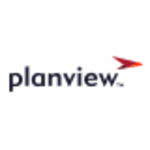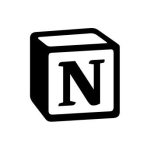What is our primary use case?
Microsoft Project can be used for a variety of purposes, one of which is creating a Gantt diagram. This feature is particularly useful for projects that require establishing a timeline and determining the duration of each task. Additionally, Microsoft Project can be integrated with cloud solutions, such as Teams and Insight, making it a valuable tool for collaborative projects. By integrating with Teams, you can share tasks with team members and collaborate more efficiently. Integrating with Insight allows you to gather data and insights about your project, enabling you to make informed decisions and improve your project management process.
What is most valuable?
The most valuable feature of Microsoft Project is the reminder feature. This feature allows for the system to send notifications or reminders to individuals who have a task to complete once someone has finished their task. This has been especially useful in situations where multiple people are involved in a task. For example, if I have completed my task and the next person is just beginning, the system will send them a reminder to notify them of my completion. This feature has proven to be very beneficial and convenient for me in my tasks.
What needs improvement?
In a future update, the system should be more inclusive and open to everyone, not just limited to one organization. For example, there may be instances where we want to bring in a guest from outside our organization and integrate them into our project. It would be beneficial if the system was more accessible and easy to integrate with other projects. Additionally, it would be great if there was a way to receive notifications, regardless of whether they come from a Gmail domain or another domain, to keep us informed of any incoming tasks.
For how long have I used the solution?
I have been using Microsoft Project for approximately a few months.
Buyer's Guide
Microsoft Project
September 2025
Learn what your peers think about Microsoft Project. Get advice and tips from experienced pros sharing their opinions. Updated: September 2025.
869,832 professionals have used our research since 2012.
What do I think about the stability of the solution?
In my organization, the stability of the solution has been good.
What do I think about the scalability of the solution?
The scalability of Microsoft Project is good.
How are customer service and support?
I did not use the support.
Which solution did I use previously and why did I switch?
I used previously Microsoft Visio.
I used Microsoft Visio to build network architecture and especially for drawing a structure.
How was the initial setup?
In the setup of Microsoft Project, the process was a bit challenging initially. The main reason was that I was not sure where to start in a safe and secure manner. Microsoft frequently updates its software and resources, but it can be difficult to find the necessary documentation for a specific solution. It is crucial to have some prior experience with similar products to effectively locate the necessary information. For someone who is just starting out and does not have the proper training, guidance from an instructor, or hands-on experience, the setup process can be quite complex.
The implementation of the solution was swift and effortless. The amount of time it took to deploy would largely depend on the specificities of your project and what features are required or optional. From my personal experience, creating the project was simple and straightforward, and did not require a significant amount of time. The deployment process was smooth and efficient.
What was our ROI?
I have received a return on investment using the solution.
What's my experience with pricing, setup cost, and licensing?
The license fees for the professional version, which is estimated to be approximately $1,600, and the standard version, which is approximately $1,200, may be considered expensive by some users. This is something that could be improved to make the platform more accessible to a wider audience.
You can purchase other solutions from Microsoft and receive this solution in the package, such as Visual Studio, it offers numerous benefits, including access to a variety of Microsoft solutions, including Project, Visio, Office 2021, and more. This makes it easier for me to access everything I need.
What other advice do I have?
I highly recommend the solution due to its ability to enhance organization and improve task management within projects. It is possible to stay informed and up-to-date with any delays or discrepancies in the work being done. The solution is immensely valuable. I wholeheartedly endorse this process.
I rate Microsoft Project a seven out of ten.
Disclosure: My company does not have a business relationship with this vendor other than being a customer.


















